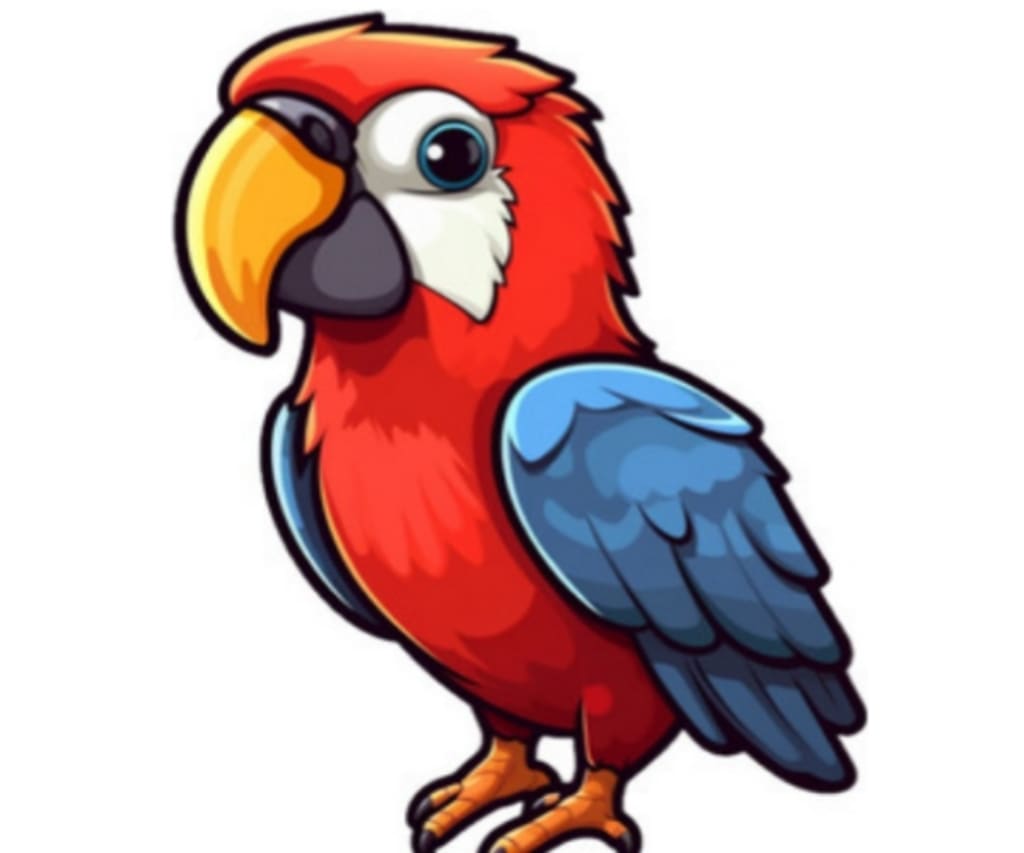The parrot story
"The Parrot" is a short story by Nobel laureate Rabindranath Tagore

"The Parrot" is a short story by Nobel laureate Rabindranath Tagore, offering a profound critique of the educational system and its impact on individuality and creativity. Set in a fictional kingdom, the narrative unfolds with a sharp satirical tone, exploring the dynamics between power, knowledge, and freedom.
The story begins in an unnamed kingdom ruled by a monarch who takes pride in his governance and the accomplishments of his realm. One day, the king's attention is drawn to a parrot, a wild bird known for its vibrant feathers and melodious song. The parrot symbolizes freedom, nature, and the intrinsic beauty of unstructured learning and expression.
The king, fascinated by the bird, decides it must be educated. He believes that the parrot's value lies in its ability to learn and recite knowledge as prescribed by the kingdom's educational norms. Thus, the parrot is captured and placed in a golden cage, signifying the confinement of its natural essence and the imposition of artificial constraints. This act sets the stage for the unfolding tragedy, illustrating the central theme of the story: the conflict between natural creativity and imposed conformity.
To educate the parrot, the king summons his ministers and scholars, who represent the established educational authorities. They devise a meticulous plan to teach the parrot, focusing on rote memorization and strict discipline. The bird is subjected to a rigorous regime, forced to repeat words and phrases from books that are beyond its comprehension. This method of education, which prioritizes mechanical learning over understanding, highlights Tagore's criticism of an education system that stifles creativity and critical thinking.
The story takes a darker turn as the parrot's natural instincts and free spirit are systematically eroded. The bird's vibrant plumage fades, and its song, once a symbol of its joyful existence, is replaced by monotonous recitations of meaningless text. The parrot becomes a mere shadow of its former self, reflecting the devastating impact of an oppressive educational system on a vibrant and inquisitive mind.
Tagore uses irony and satire to underscore the absurdity of the situation. The king and his ministers are depicted as blind to the harm they are causing, convinced that their methods are in the parrot's best interest. They equate the bird's ability to mimic words with true knowledge, ignoring the parrot's deteriorating condition. This misplaced confidence in their approach is a scathing critique of those who equate education with the accumulation of facts rather than the cultivation of wisdom and understanding.
As the parrot's condition worsens, the story reaches its tragic climax. Despite the bird's evident suffering, the king and his advisors remain oblivious, celebrating what they perceive as their educational success. The parrot, once a symbol of natural beauty and freedom, is reduced to a lifeless entity, its spirit broken by the relentless imposition of an unsuitable educational regime. This poignant ending serves as a powerful indictment of an education system that values conformity over individuality, mechanization over creativity, and compliance over curiosity.
"The Parrot" is more than just a story about a bird; it is an allegory for the broader societal implications of misguided educational practices. Tagore, through his narrative, advocates for an education system that nurtures the inherent potential of individuals, fosters creativity, and respects the natural inclinations of learners. He calls for a holistic approach to education that goes beyond rote learning and embraces the development of critical thinking, emotional intelligence, and a love for lifelong learning.
In conclusion, Rabindranath Tagore's "The Parrot" is a powerful critique of traditional education systems that prioritize rote memorization and conformity at the expense of creativity and individuality. Through the poignant and tragic tale of a wild parrot subjected to oppressive educational methods, Tagore underscores the importance of preserving the natural spirit of learners and fostering an environment that encourages free thought and expression. The story serves as a timeless reminder of the need to balance structured learning with the freedom to explore, question, and grow, ultimately advocating for an education system that truly enriches the human spirit.
About the Creator
Enjoyed the story? Support the Creator.
Subscribe for free to receive all their stories in your feed. You could also pledge your support or give them a one-off tip, letting them know you appreciate their work.






Comments
There are no comments for this story
Be the first to respond and start the conversation.